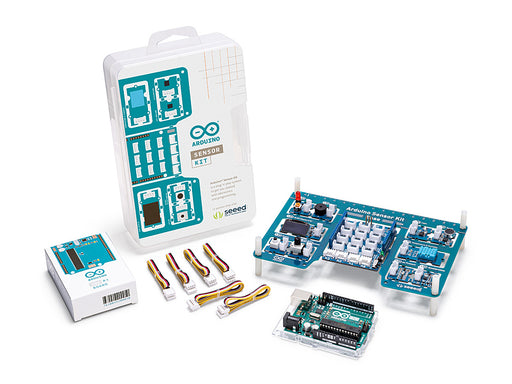
Overview
This is a multifunctional sensor that gives you temperature and relative humidity information at the same time.
It utilizes a TH02 sensor that can meet measurement needs of general purposes. It provides reliable readings when environment humidity condition inbetween 0-80% RH, and temperature condition inbetween 0-70°C, covering needs in most home and daily applications that don't contain extreme conditions.
Features:
- Wide operating voltage range:(3.3V ~ 5V)
- Low Power Consumption:350 µA during RH conversion
- 0 to 100% RH operating range
- Measuring Range: Humidity: 0% - 80% RH Temperature: 0 ~ 70 °C
- Accuracy: Humidity: ±4.5% RH
- Temperature: ±0.5°C
- I2C host interface
- Excellent long term stability
Tech specs
|
Items |
Min |
|
PCB Size |
2.0cm*4.0cm |
|
Interface |
2.0mm pitch pin header |
|
IO Structure |
SIG,VCC,GND,NC |
|
ROHS |
YES |
Electronic Characteristics
|
Items |
Conditions |
Min |
Norm |
Max |
Unit |
|
VCC |
- |
3.3 |
- |
5 |
Volts |
|
Measuring Current Supply |
- |
1.3 |
- |
2.1 |
mA |
|
Average Current Supply |
- |
0.5 |
- |
1.1 |
mA |
|
Measuring Range |
Humidity |
20% |
- |
90% |
RH |
|
Temperature |
0 |
- |
50 |
°C |
|
|
Accuracy |
Humidity |
- |
- |
±5% |
RH |
|
Temperature |
±2 |
°C |
|||
|
Sensitivity |
Humidity |
- |
1% |
RH |
|
|
Temperature |
1 |
°C |
|||
|
Repeatability |
Humidity |
±1% |
RH |
||
|
Temperature |
±1 |
°C |
|||
|
Long-term Stability |
±1% |
RH/year |
|||
|
Signal Collecting Period |
2 |
S |
Get Inspired

… In partnership with Campus Store Academy, this informative workshop will walk you through implementing Arduino in the classroom with Arduino CTC 101. Register here. Saturday, October 13th 11:30am - 12:30pm (Pavilion 7 - Room 7): Arduino MKR Vidor: Democratizing FPGA: Led by Martino Facchin, Arduino Senior HW Engineer, this session will discuss how the MKR Vidor combines the power and flexibility of an FPGA with the ease of use of Arduino. More info here. 11:45am - 12:45pm (Pavilion 9 - Room 11): In partnership with Campus Store Academy, this informative workshop will walk you through implementing Arduino in the classroom with Arduino CTC 101. Register here. 2:15pm - 3:15pm (Pavilion 7 - Room 7) Arduino IoT Cloud: The Internet of Things Revolution: Luca Cipriani, Arduino CIO, will focus on the potential of the Arduino IoT Cloud, the latest developments in the Arduino ecosystem, as well as how to build connected objects in a quick, easy, and secure manner. More info here. 4:15pm - 5:15pm ( Pavilion 9 - Room 13): Arduino Engineering Kit: Advanced Programming and Learning Applications: In collaboration with Campus Store Academy, this workshop is concentrated on helping tomorrow’s engineers approach mechatronics and automated control. Register here. 5:45pm - 6:45pm ( Pavilion 9 - Room 11): STEAM with Arduino: In collaboration with Campus Store Academy, this session will introduce you to the Arduino Starter Kit Classroom Pack and how Arduino is being used as a flexible learning tool. More info here. Sunday, October 14th 2:45pm - 3:45pm: Shape Your Future with MATLAB and the Arduino Engineering Kit: In collaboration with the MathWorks team and Jose Garcia, HW Engineer at Arduino, this talk will feature live demos of a robot designed and controlled with Arduino and MATLAB. More info here. 4:15am - 5:45pm (Pavilion 9 - Room 11): CTC: Bring Open-Source into Your Classroom: In partnership with Campus Store Academy, this informative workshop will walk you through








